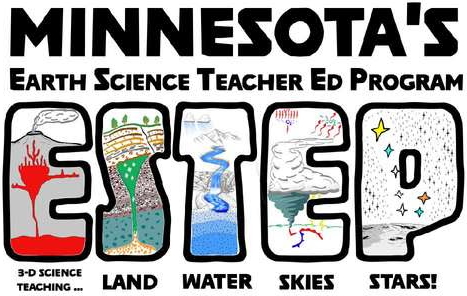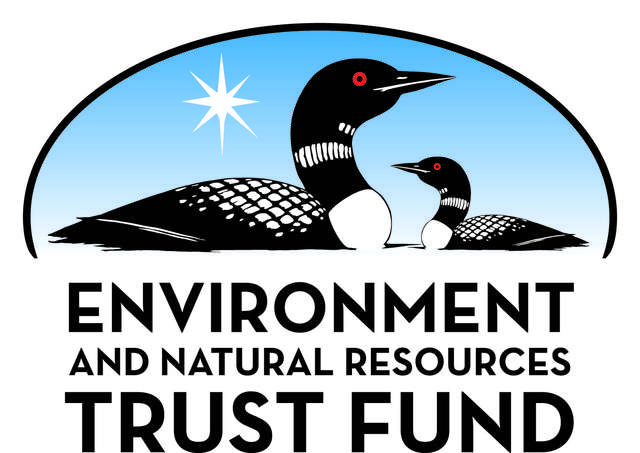|
|
|
Participants chose from several workshops and field trips...
...all workshop and field trips offered for you at no additional registration cost!!
Field Trips: "Lake Superior's Estuary", "In Search of The Unusual"
9:00 - Noon
Lake Superiors New National Estuary: Research, Stewardship and Education
The St. Louis River, which flows between Duluth and Superior, WI, is the largest U.S. river emptying into the largest of the Great Lakes. Over 16,000 acres surrounding this unique river mouth were recently designated by the National Oceanic and Atmospheric Administration (NOAA) as a National Estuarine Research Reserve (NERR). Come experience the reserve with Education Coordinator Deanna Erickson. Participants will first visit the future site of the interpretive center and offices on Barkers Island for an introduction to this freshwater estuary and the research and education program. Following this indoor presentation, we will explore a sheltered branch of the river or the beautiful beach along Wisconsin Point, depending on the weather. You’ll leave knowing more about this amazing freshwater resource and Lake Superior, and have the resources you need to connect the NERR to your classroom. Come prepared to explore outdoors!8:00-4:00 (limited to 24 people)
In Search of The Unusual
It's hard to know exactly what to expect from the first days of March in Minnesota, but it is guaranteed that there are unusual sightings of birds and other animals in Northern Minnesota. Join us for a day exploring what's out there this year. The bird world is always a good place to start. The Duluth Harbor area frequently hosts irregular bird visitors either for the winter, or just passing through and stopping in the big waters of Lake Superior. And the Sax/Zim bog about an hour away is a world renowned Important Bird Area (IBA), and has many interesting northern residents such as Great Gray, Boreal and Hawk Owls, as well as perhaps the eastern most resident Black-billed Magpies, along with Boreal Chickadees, and lots of other fun northern birds. We know there are many Snowy Owls wandering south this year from the Arctic, and hope to spy some of them still hanging out to the south. We'll also keep close watch on unusual sightings in the weeks leading up to March the 3rd and prepare a day of adventures in seeking out what is unusual this year between the Duluth Harbor and the Sax/Zim Bog. Plan on leaving in the morning with a bag lunch and returning in the late afternoon after an adventurous day. Bring your binoculars if you have them and be prepared for whatever the weather may bring outside.
9:00 - Noon
Teaching with Great Lakes Data – Catch the Wave!
Workshop participants will be introduced to Great Lakes data-based lessons from www.greatlakeslessons.com and learn how to use them in the classroom. Handouts provided. Participation is limited to 20 teachers and advanced registration will be required at the MnSTA conference.
The use of Great Lakes data in education is quickly growing, in large part due to the development of the Great Lakes Observing System which has allowed the collection and standardization of Great Lakes data from all sensor sources – buoys, satellites, meteorological stations, water level gages, and vessels of opportunity. Michigan Sea Grant has led the development of new curriculum units focusing on the use of real-time, near-real-time, and archived Great Lakes data in the classroom. These internet-based modules focus on significant aspects of Great Lakes science. The three currently available modules are Earth Science, Physical Science, and Life Science. Each module contains background reference information and from two to four synergistic, yet independent, lessons. Focused primarily at the middle school level, each lesson is correlated with National Science Education Standards, as well as Ocean Literacy Principles and the new Great Lakes Literacy Principles. This workshop is designed as a 3-hour opportunity for teachers to review and use at least one lesson from each of the three modules. Classroom materials will be provided that will enhance the use of Great Lakes data, and participants will complete a workshop assessment.
9:00 - Noon
The Invasion Station – Aquatic Invasive Species, the Who, How, and What Now of AIS Education • Download Flyer Here!
Do you want to get your students involved in a successful stewardship project but are fresh out of ideas or need someone else to bounce your ideas off of? To get your creative juices flowing, we’ll play games to learn about some of the most notorious (and interesting) aquatic invasive species and explore some successful stewardship projects. Time will be allowed for sketching out your own stewardship project and exchanging ideas. You will also have the opportunity to become a part of a Great Lakes – wide stewardship network that will link you to other teachers in the Great Lakes region. Completed stewardship projects will be featured on the Nab the Aquatic Invader! website www.iiseagrant.org/nabinvader.
Materials that will help you incorporate aquatic invasive species education inside (and outside) your classroom will be provided. Participants will be asked to complete a workshop assessment.
9:00 - 11:00
Video Analysis in the Physics Classroom. High Speed Cameras and Practical Ideas...Come and Play!
Paul Lulai, Tom Tomashek and Mike Maas present this 2 hour video analysis workshop for people who want to come through and give it a try. They’ll have a variety of tools and experiences to share. Participants will have a chance to try creating video and working with digital analysis tools. Bring your ideas!









 Minnesota science teachers should know about:
Minnesota science teachers should know about: